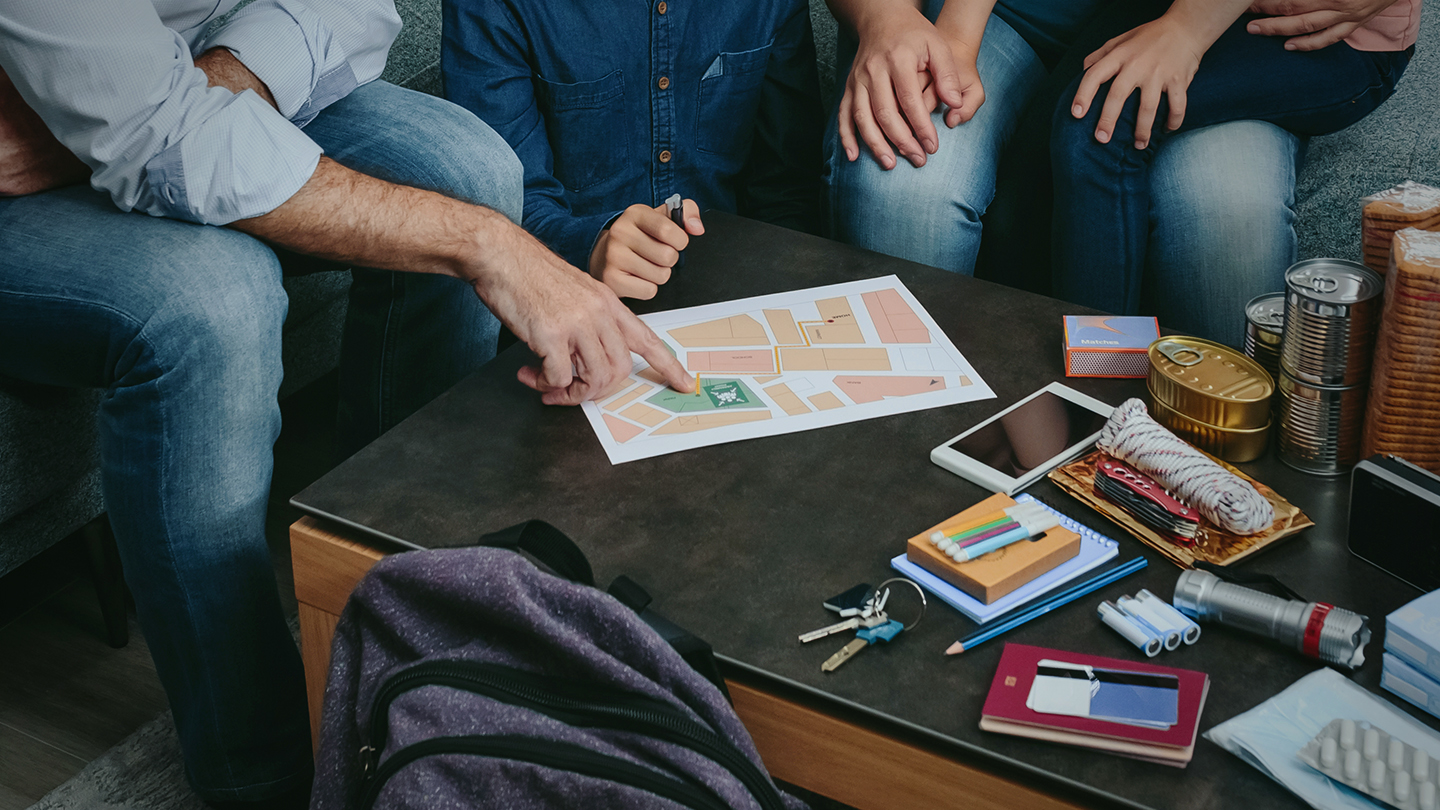
Be Prepared
Wildfires
Wildfires are unplanned fires that burn in natural areas such as forests, grasslands, or prairies. These dangerous fires spread quickly and can devastate not only wildfire and natural areas, but also communities.
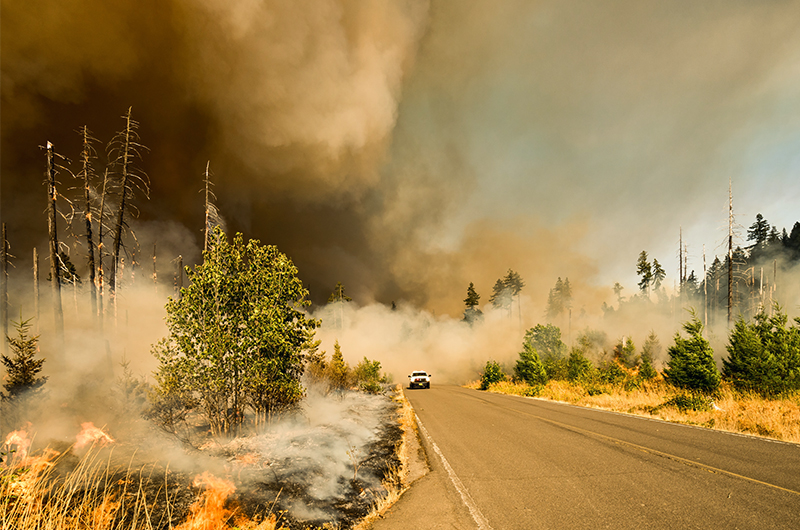
Recognize Warnings and Alerts
- Have several ways to receive alerts. Download the FEMA app and receive real-time alerts from the National Weather Service for up to five locations nationwide.
- Be aware of the Emergency Alert System (EAS) and Wireless Emergency Alert (WEA)- which requires no-sign up. (link to 3.12)
- Pay attention to air quality alerts.
Make an Emergency Plan
- Create a family communication plan (link to 3.3)
- Make sure everyone in your household knows and understands what to do if you need to quickly evacuate.
- Don’t forget a plan for the office, kids’ daycare, and anywhere you frequent.
Review Important Documents
- Make sure your insurance policies and personal documents like ID are up to date.
- Make copies and keep them in a secure password protected digital space.
Strengthen your Home
- Use fire-resistant materials to build, renovate or make repairs.
- Find an outdoor water source with a hose that can reach any area of your property.
- Create a fire-resistant zone that is free of leaves, debris or flammable materials for at least 30 feet from your home.
- Designate a room that can be closed off from outside air. Close all doors and windows. Set up a portable air cleaner to keep indoor pollution levels low when smoky conditions exist.
Know your Evacuation Zone
- You may have to evacuate quickly due to a wildfire. Learn your evacuation routes, practice with your household, pets, and identify where you will go.
- If you must evacuate to a public shelter, try to bring items that can help protect you and others in the shelter from COVID-19, such as hand sanitizer, cleaning materials, and two masks per person. Children under 2 years old and people who have trouble breathing should not wear masks.
- Follow the instructions from local authorities. They will provide the latest recommendations based on the threat to your community and appropriate safety measures.
- Review the CDC’s guidelines for “Going to a Public Disaster Shelter During the COVID-19 Pandemic.”
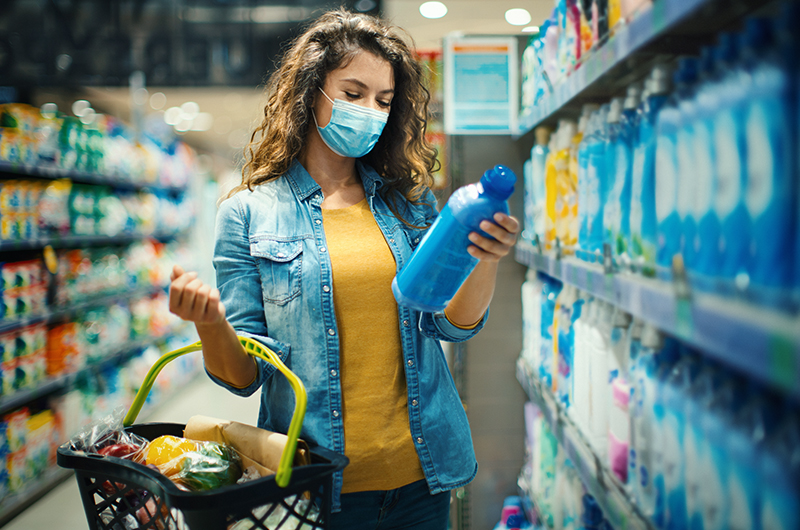
Gather Supplies
- Have enough supplies for your household, include medication, disinfectant supplies, mask,s pet supplies in your go bag or car trunk. Being prepared allows you to address smaller medical issues at home, alleviating the burden on urgent care centers and hospitals.
- Being prepared allows you to avoid unnecessary excursions and to address minor medical issues at home, alleviating the burden on urgent care centers and hospitals.
- Remember that not everyone can afford to respond by stocking up on necessities. For those who can afford it, making essential purchases and slowly building up supplies in advance will allow for longer time periods between shopping trips. This helps to protect those who are unable to procure essentials in advance and must shop more frequently. In addition, consider avoiding WIC-labeled products so that those who rely on these products can access them.
- If you already have one at home, set aside a respirator, like an N95 respirator, to keep smoke particles out of the air you breathe. Respirators are not meant to fit children. Due to COVID-19, it may be difficult to find respirators. While cloth masks, surgical masks, and dust masks provide protection from exposure to COVID-19, they will not protect you from smoke inhalation. To ensure that healthcare workers have access to N95 respirators, it is best to limit your exposure to smoke rather than buy respirators.
- Be cautious when carrying flammable or combustible household products that can cause fires or explosions if handled wrong, such as aerosols, cooking oils, rubbing alcohol, and hand sanitizer.
- If you already have an N95 mask, use this to protect yourself from smoke inhalation. N95 masks also protect against the spread of COVID-19, however they should be reserved for healthcare workers. If you are in a public cleaner air space or shelter, use a mask to help slow the spread of COVID-19.
- Keep your cell phone charged when wildfires could be in your area. Purchase backup charging devices to power electronics.
Evacuate immediately if authorities tell you to do so!
Due to limited space because of COVID-19, public cleaner air shelters and cleaner air spaces may not be the safest choice for you and your family. Check with local authorities for the latest information about public shelters or download the free Red Cross Emergency app for a list of open Red Cross shelters in your area. In addition:
- Consider making plans with friends or family to shelter with them where you may be safer and more comfortable.
- If you must evacuate to a public shelter, try to bring items that can help protect you and others in the shelter from COVID-19, such as hand sanitizer that contains at least 60 percent alcohol, cleaning materials, and two masks per person. Masks should not be worn by children under 2 years old, people who have trouble breathing, and people who are unconscious, incapacitated, or otherwise unable to remove the mask. Be prepared to be screened for COVID-19 upon arrival.
- While at a public shelter, maintain a distance of at least six feet between yourself and those who are not part of your household. Review the CDC’s guidelines for “Going to a Public Disaster Shelter During the COVID-19 Pandemic.”
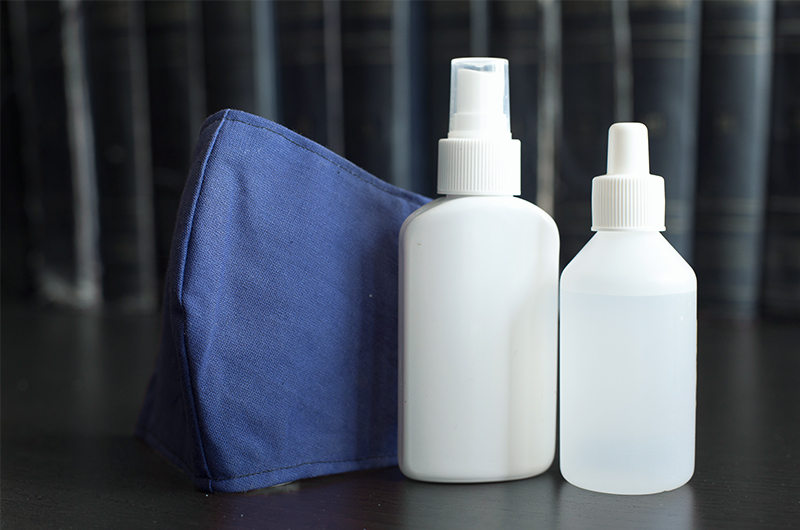
If possible, bring items with you when you evacuate that can help protect you and others from COVID-19 while sheltering. Examples include hand sanitizer that contains at least 60 percent alcohol, cleaning materials, and two cloth masks per person to prevent the spread of infection.
If trapped, then call 911 and give your location, but be aware that emergency response could be delayed or impossible. Turn on lights to help rescuers find you.
Pay attention to emergency alerts and notifications for information and instructions.
Use an N95 mask to protect yourself from smoke inhalation.
If you already have one at home, use a respirator, like an N95 respirator, to keep smoke particles out of the air you breathe. Respirators are not meant to fit children. Due to COVID-19, it may be difficult to find respirators. While cloth masks, surgical masks, and dust masks provide protection from exposure to COVID-19, they will not protect you from smoke inhalation. To ensure that healthcare workers have access to N95 respirators, it is best to limit your exposure to smoke rather than buy respirators. If you do not already have N95 respirators, you can reduce your exposure to smoke by doing the following:
- Choose a room to close off from outside air and set up a portable air cleaner or filter to keep the air in this room clean even when it’s smoky in the rest of the building and outdoors.
- Use high efficiency filters in your central air conditioning system to capture fine particles from smoke. If your system has fresh air intake, set the system to “recirculate” mode and close the outdoor intake damper.
- Avoid using anything that burns, such as candles and fireplaces. Do not vacuum, as vacuuming stirs up particles already inside your home. Do not smoke tobacco or other products. Smoking puts even more pollution into the air.
If you are not ordered to evacuate but smoky conditions exist, stay inside in a safe location, or go to a community building where smoke levels are lower.
Pay attention to any health symptoms if you have asthma, COPD, heart disease, or are pregnant. If you are sick and need medical attention, contact your healthcare provider for further care instructions and shelter in place, if possible. If you are experiencing a medical emergency, call 9-1-1 and let the operator know if you have, or think you might have, COVID-19. If possible, put on a cloth face covering before help arrives. If staying at a shelter or public facility, alert shelter staff immediately so they can call a local hospital or clinic.
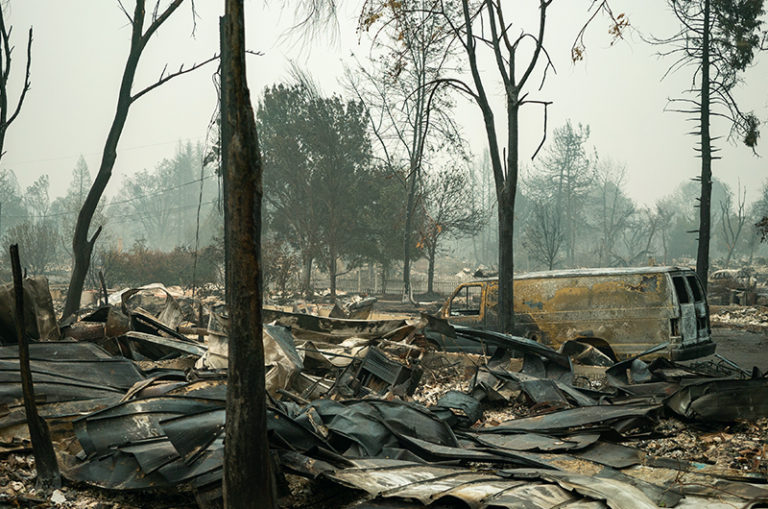 Do not return home until authorities say it is safe to do so.
Do not return home until authorities say it is safe to do so.- Avoid hot ash, charred trees, smoldering debris, and live embers. The ground may contain heat pockets that can burn you or spark another fire. Use appropriate masks or respirators and maintain a physical distance of at least six feet while working with someone else to protect yourself from COVID-19. When cleaning up ash, use a respirator to limit your exposure.
- When cleaning, wear protective clothing, including a long-sleeved shirt, long pants, work gloves, appropriate cloth face coverings or masks, and sturdy thick-soled shoes during clean-up efforts.
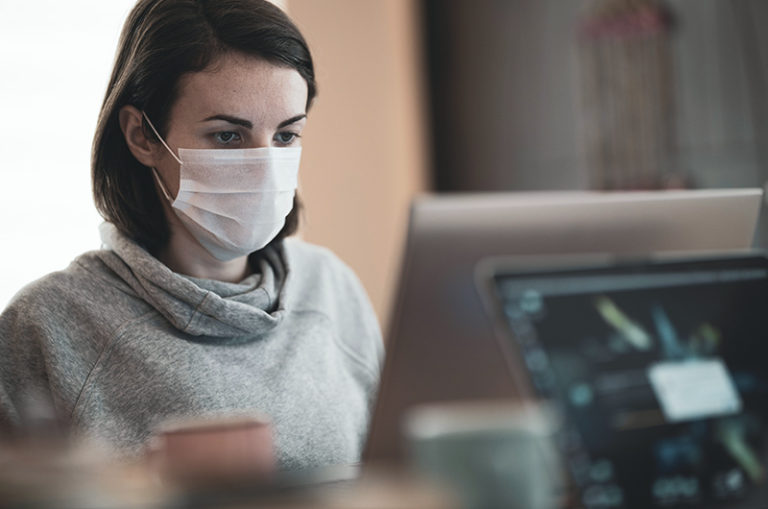 Use appropriate masks or respirators.
Use appropriate masks or respirators.- When cleaning up ash, use a respirator to limit your exposure and wet debris to minimize breathing dust particles
- People with asthma and/or other lung conditions should take precautions in areas with poor air quality, as it can worsen symptoms. Children should not help with clean-up efforts.
- Pay attention to any health symptoms if you or your children have asthma, COPD, heart disease, or are pregnant. Get to medical help if you need it.
- Document property damage with photographs. Conduct an inventory and contact your insurance company for assistance.
 Continue taking steps to protect yourself from COVID-19 and other infectious diseases, such as washing your hands often and cleaning commonly touched surfaces.
Continue taking steps to protect yourself from COVID-19 and other infectious diseases, such as washing your hands often and cleaning commonly touched surfaces.- Send text messages or use social media to reach out to family and friends. Phone systems are often busy following a disaster. Make calls only in emergencies.
- Engage virtually with your community through video and phone calls. Know that it’s normal to feel anxious or stressed. Take care of your body and talk to someone if you are feeling upset.